As you might have guessed from the title of this article, I have something of an… obsession? with productivity tools.
I have ADHD (shout out to all the folks who were diagnosed as adults!) and I lean heavily on systems to help me focus and stay productive. But — likely also because of the ADHD — I love trying new things.
Which means I’ve never met a new tool I didn’t sign up for in about 2.5 seconds.
I find that the freshness of new tools helps motivate me to stay on task, too. Hey, a system is a system, right?
So, confession: over the past year or so, I have tried no less than 57 productivity tools. (I tracked it all in Notion, naturally — pop me a message if you want to see the receipts).
And yet, there are several apps that I keep coming back to, or have stuck with permanently, on my tooling travels.
Before we get into it, I want to acknowledge that ‘productivity tool’ is a really broad term. These days, you’ll find it applied to everything from email add-ons to AI writing tools and ChatGPT.
While these other apps and tools can undoubtedly help boost efficiency, in this article, I’m zeroing in on productivity tools in the more traditional sense — those that help me stay organized, plan my day, and stay focused.
If that sounds like it might be up your alley, let’s get into it.
Jump to a tool:
Todoist
Best free productivity tool for managing your tasks
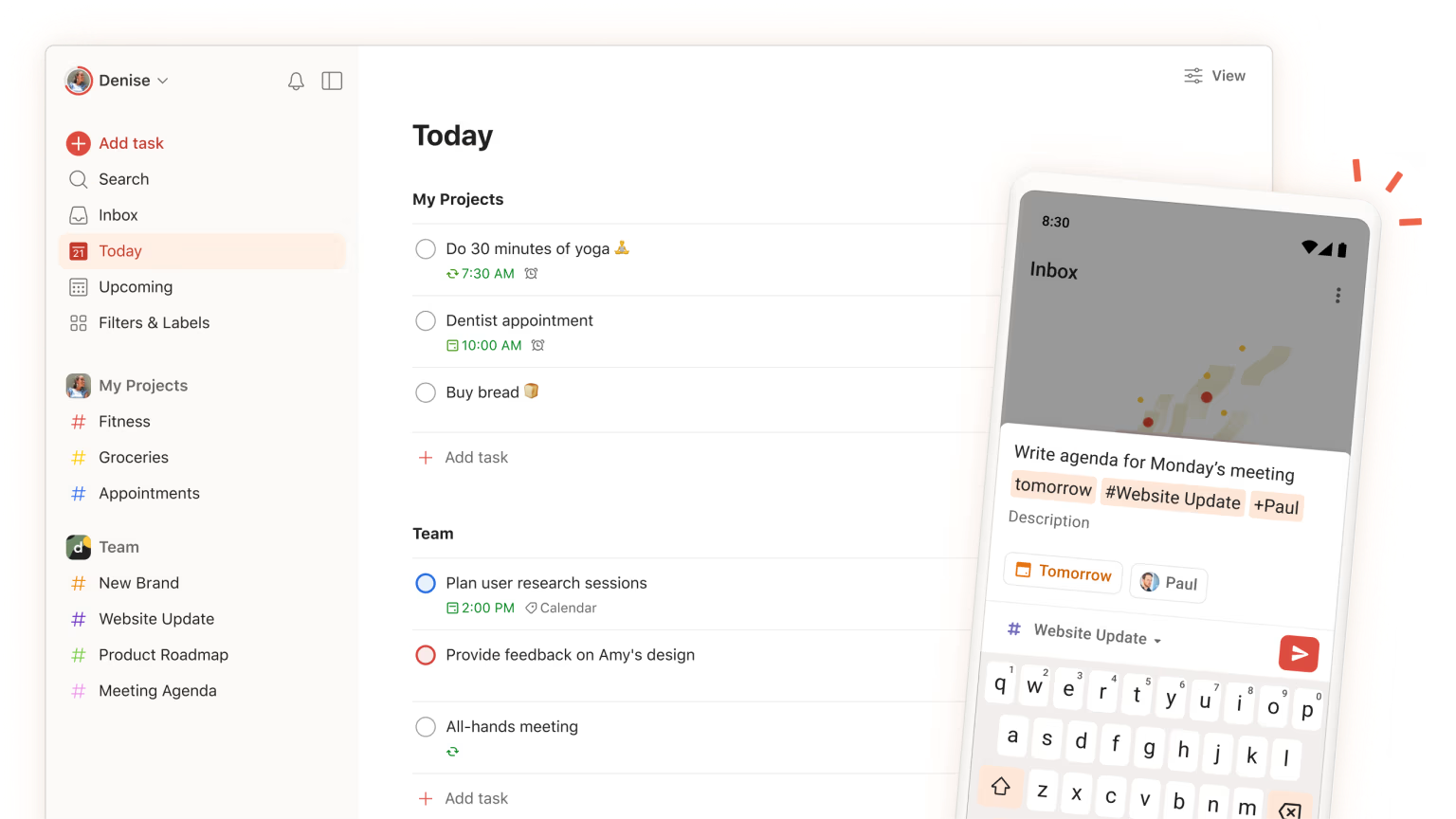
Todoist — no matter how many tools I try, I somehow always find my way back to you.
It just… works.
Todoist is a planning tool that will make sense for most people's working styles — it has lists, kanbans, and a time-blocking calendar view (on the paid plan).
While there are some features I’d love to see added (the ability to color-code time blocks is high up on my wishlist), Todoist is a wonderful second brain for tasks and projects.
While it is very customizable, it doesn’t require much configuration to get started. It also has great templates based on well-known productivity systems, like Getting Things Done, The Eisenhower Matrix, and more.
Todoist plays really well with a bunch of other tools, too — you can easily add Slack messages as tasks, for example.
If you're looking to use it on a larger scale, it works really well for teams, both corporate and otherwise. My husband and I have several projects we collab on — and I do rather enjoy assigning tasks to him.
Most of these features are available on their free plan, but their paid plan is pretty affordable, too.
My favorite features:
- Comprehensive free plan
- Beautiful web, desktop, and app versions
- Natural language processing, so you can type ‘Email Hailley tomorrow’ and the task will be added to your list for the next day.
- ‘Karma’ — a simple gamification system that gives you karma as you complete tasks
Cost: Free, with paid plans starting at $5 per month.
Akiflow
Best productivity tool for consolidating tasks from everywhere
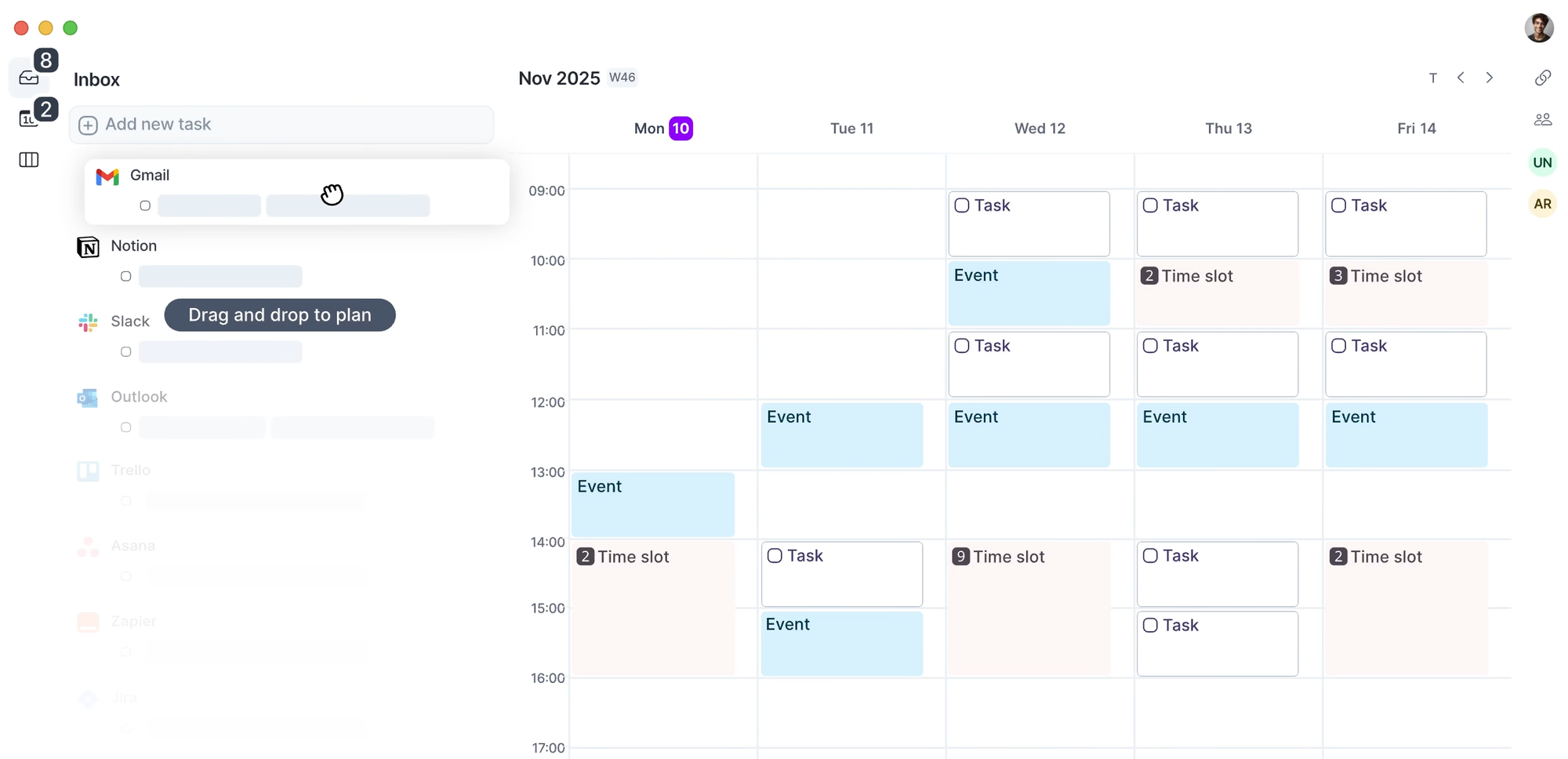
Akiflow is pretty much the end of notification overwhelm.
It goes beyond task manager — Akiflow is a task consolidator. It integrates with your email, Slack, Notion, Todoist, Asana, Trello, and a bunch of other tools and pulls them into a single inbox as tasks.
From there, you can organize these tasks into both folders and projects and then map them out on your calendar. So, for example, if I save a message in Slack, it will show up as a task in my inbox in Akiflow. From there, I can schedule it for a specific day,
Another feature I love (and that many of the productivity tools are missing) is analytics. Every task that is assigned a duration or time-blocked in your calendar — and completed — is tracked. From there, you can get a big picture look at how long you spent on certain projects, tasks, or in meetings.
I find it super motivating to see how much work I managed to get through in one day. It’s also really handy, if, like me, you’re working on multiple projects outside your 9-5. With Akiflow, I can track how many hours I spend on freelance work or my personal social media content.
It also has daily planning and shutdown rituals, really solid productivity analytics, plus a calendar booking feature like Calendly.
Now, Akiflow is pricey but they offer loads of really solid discounts if you subscribe to their emails or do their 7-day trial, which is what has made it affordable for me.
My favorite features:
- Fast and frequent updates and new features
- Daily ‘rituals’ to help you get started and review your day’s work
- AI assistant, ‘Aki,’ which can help you organize your day
- A huge list of integrations with other tools
- Simple analytics to help you get a sense of how much time you’re spending in specific areas
Cost: $34 monthly or $19 monthly paid annually. Keep an eye out for regular promos.
Routine
Best productivity tool with a focused daily view
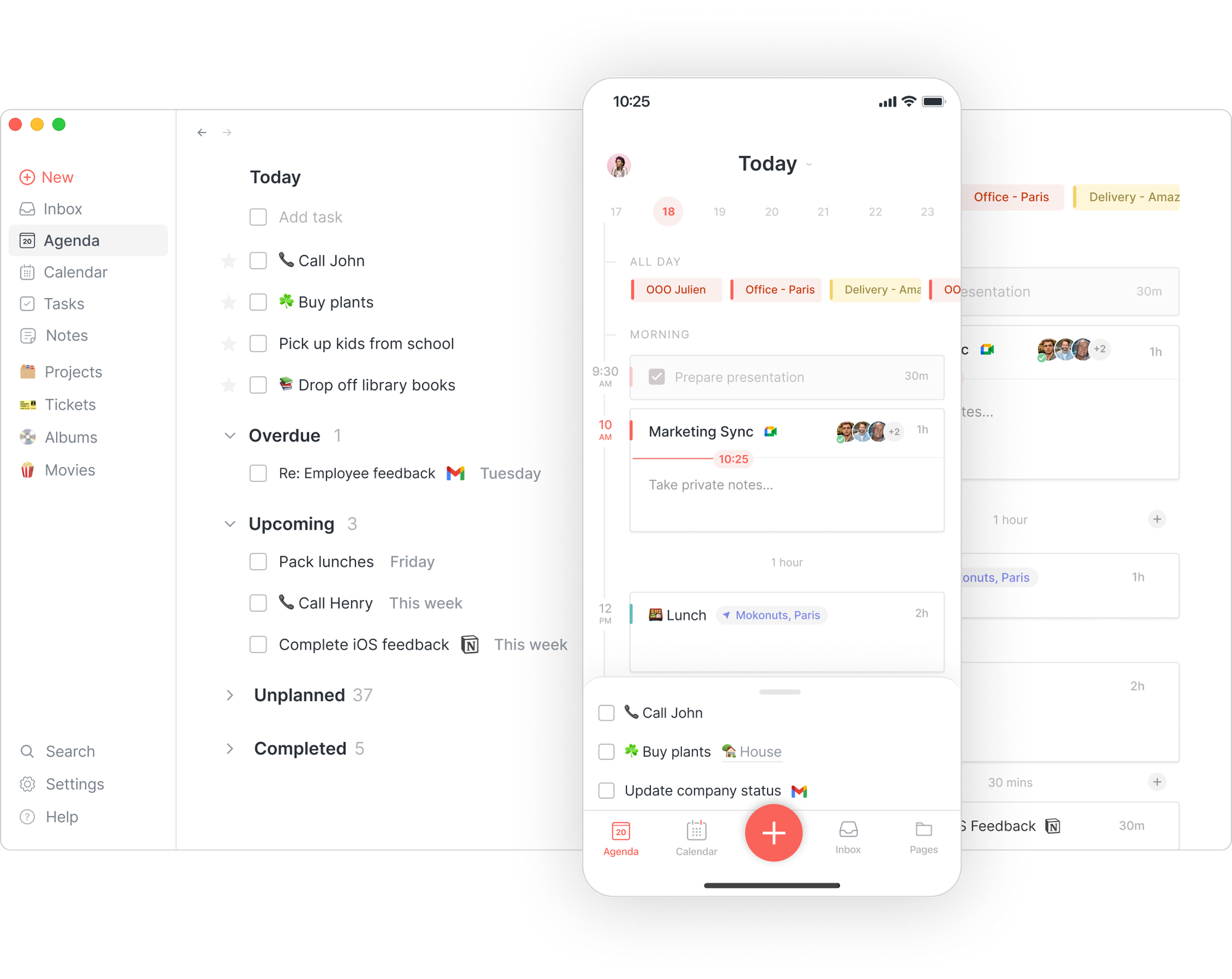
If your never-ending to-do list tends to get too overwhelming when captured in a system, I hear you. Sometimes the endless stream of boxes to check can get a little too much, prompting me to close the app, and hit YouTube instead.
That’s where a tool like Routine comes in. It is a truly beautifully designed app that integrates with your calendar to pull in your events and even Notion to pull in tasks.
It is wonderful for time blocking, which plays well with my favorite feature, the focused today view. It only shows you items you have planned for that day, which is great for helping reduce overwhelm.
It’s a little different from most task managers in that you can organize your tasks within pages rather than folders, where you can create notes as well, which is interesting.
The only downside for my unicorn brain with this app is that there’s no easy way to color-code your tasks in your calendar. Routine has a really exciting roadmap, so I’m definitely keeping an eye on all the features they have planned for this year.
Best part — Routine has a comprehensive free plan. It will cost you nothing.
My favorite features:
- Focused ‘Today’ view to reduce overwhelm
- Minimalist, clean interface
- Solid list of integrations to consolidate tasks from elsewhere
Cost: Free, with paid plans starting at $10 per month.
Toggl Track
Best productivity tool for time tracking

If you’ve ever finished a workday and wondered, “What did I even do today?” — it’s me, hi — then it’s time to explore Toggl Track.
It’s one of the simplest time tracking tools I’ve ever used, and it helps me stay honest about where my time is actually going. You can track by project or task, and even set billable rates if you’re freelancing.
You can track your time retroactively or live as you work. Hitting the start button on a time-tracking task is like an instant productivity boost for me. Because my time is being recorded, I’m way less likely to bounce between tasks or fall down a TikTok rabbit hole.
The reporting features are surprisingly satisfying, too. Even if you don’t track every minute, doing it can offer really helpful insight. Are you spending too much time on a side project, or tasks that are technically outside of your scope?
There are some other tools on this list that have analytics, but nothing quite on the level of Toggl. You can drill down by time period, project, or task — and have a handy bar/pie/line graph to go along with it.
The integrations are my absolute favorite. Thanks to a clever browser extension, Toggl Track pairs with almost any web-based tool, so you don’t even need to open Toggl to start tracking.
With the extension enabled, the little pink ‘start’ button can appear on everything from Google Docs to Notion pages to emails. One of my favorite workflows is to timeblock in Todoist, then start a Toggle task within the Todoist web app.
That way, I only need to log into Toggl to review the analytics.
My favorite features:
- Smooth integrations with a mindblowing number of tools
- Multiple ways to visualize your productivity data
- Ability to export reports to share with managers
- Easily connect your timed work to invoices — amazing for freelancers.
Cost: Free, with paid plans starting at $10
Sunsama
Best productivity tool for mindful planning
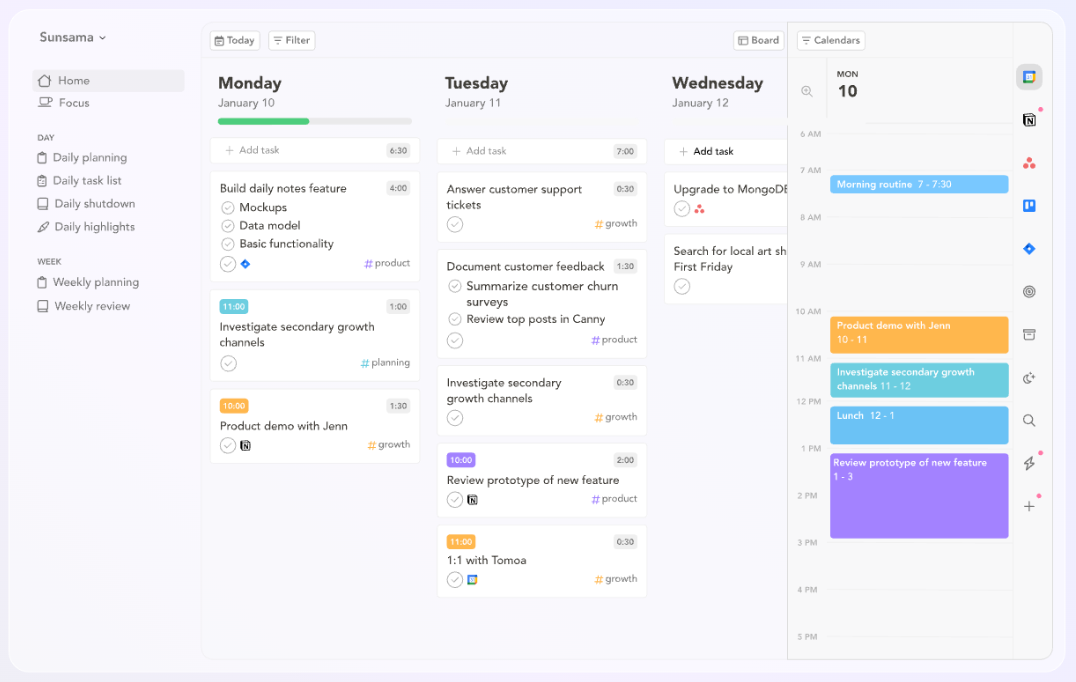
I need the tools I use to be aesthetically pleasing. If they’re not, I just can’t bring myself to use them.
The bar is high, and Sunsama is probably the most beautifully designed on this list. It delivers on the promise of productivity, too — Sunsama is all about mindful planning and being realistic about what you can actually achieve in a day.
It’s excellent for lovers of time blocking who tend to overestimate what they can get done.
It encourages you to set estimated times for each task as part of a really lovely daily planning ritual, and lets you know when you have too much planned for the day.
It also has a lightweight stats and analytics feature so you can see where you spent your time, which I love.
The only downside to this app is the cost — it comes in at $20 per month, $16 if paid annually, but can you really put a price on productivity? Probably.
My favorite features:
- Guided daily and weekly planning routines
- Simple analytics to help you better manage your time
- Solid list of integrations to consolidate tasks from elsewhere
Cost: $20 per month, $16 if paid annually
P.S. If you’re looking for a similar tool on a budget, Ellie deserves an honorable mention here! Ellie was built by an independent developer, it’s really nice to look at, and works in a similar way.
Brain.fm
Best productivity tool for getting into deep focus mode
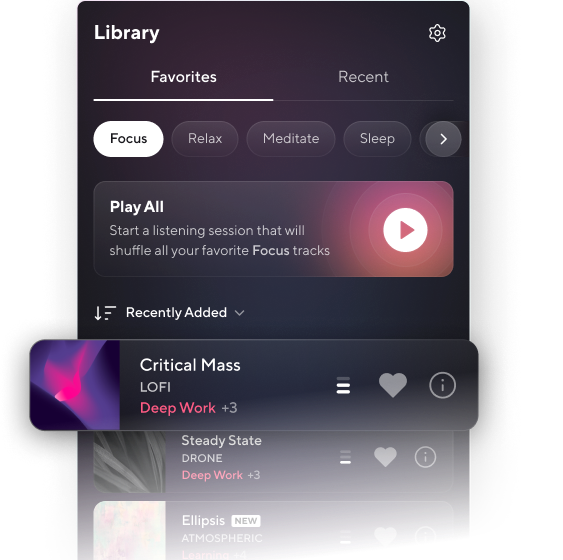
When I need to get into deep work mode, brain.fm is my first port of call.
It’s a music app, but not in the way you think — brain.fm uses science-backed audio that’s specifically designed to help you focus, relax, or sleep.
According to their site, brainwaves operate at different speeds (Hz) that scientists generally break down into 4 categories that are associated with different mental states — one of these is “active thinking, problem-solving, and focus.”
“Brain.fm identifies the optimal Hz range for a given mental state and translates it into volume modulations within certain areas of our music,” the company explains. “This encourages your brain to increase the power level of brainwaves that are equal to or similar to the patterns we've embedded in the music.”
Whether it is a placebo effect or not, the ‘Focus’ mode really works for me, particularly for creative work. I find I’m able to get into a flow state more often than not when I’m listening.
There are a handful of other apps and tools that offer something similar, but many of them don’t offer the ability to customize your sounds in the way brain.fm does. Simple filters help you pinpoint what works for you, whether that’s cinematic sounds, acoustic guitar, singing bowls, or birdsong. (I’m partial to thunderstorms.)
It’s not free, but the subscription is pretty reasonable. If you’re the kind of person who works best with sound but finds lyrics distracting (like me!) brain.fm could help.
My favorite features:
- Huge variety of sound filters that help you customize your experience
- Use it to focus, sleep, meditate, and more
- An app for every device — there’s a version for desktops, phones, and tablets. You can use in-browser too, if you prefer
Cost: $9.99 per month or $69.99 per year.
Focus Traveller
Best productivity tool for fun Pomodoro sessions
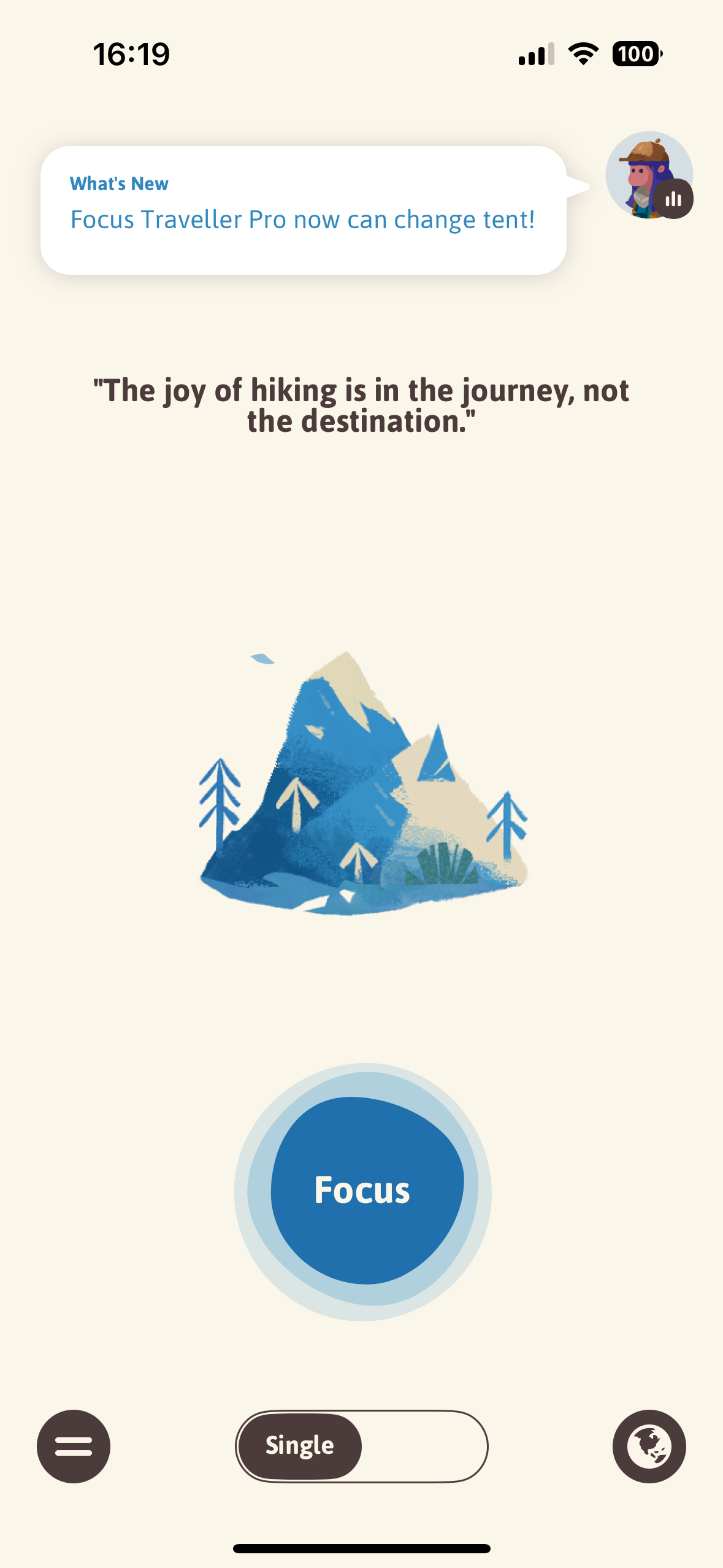
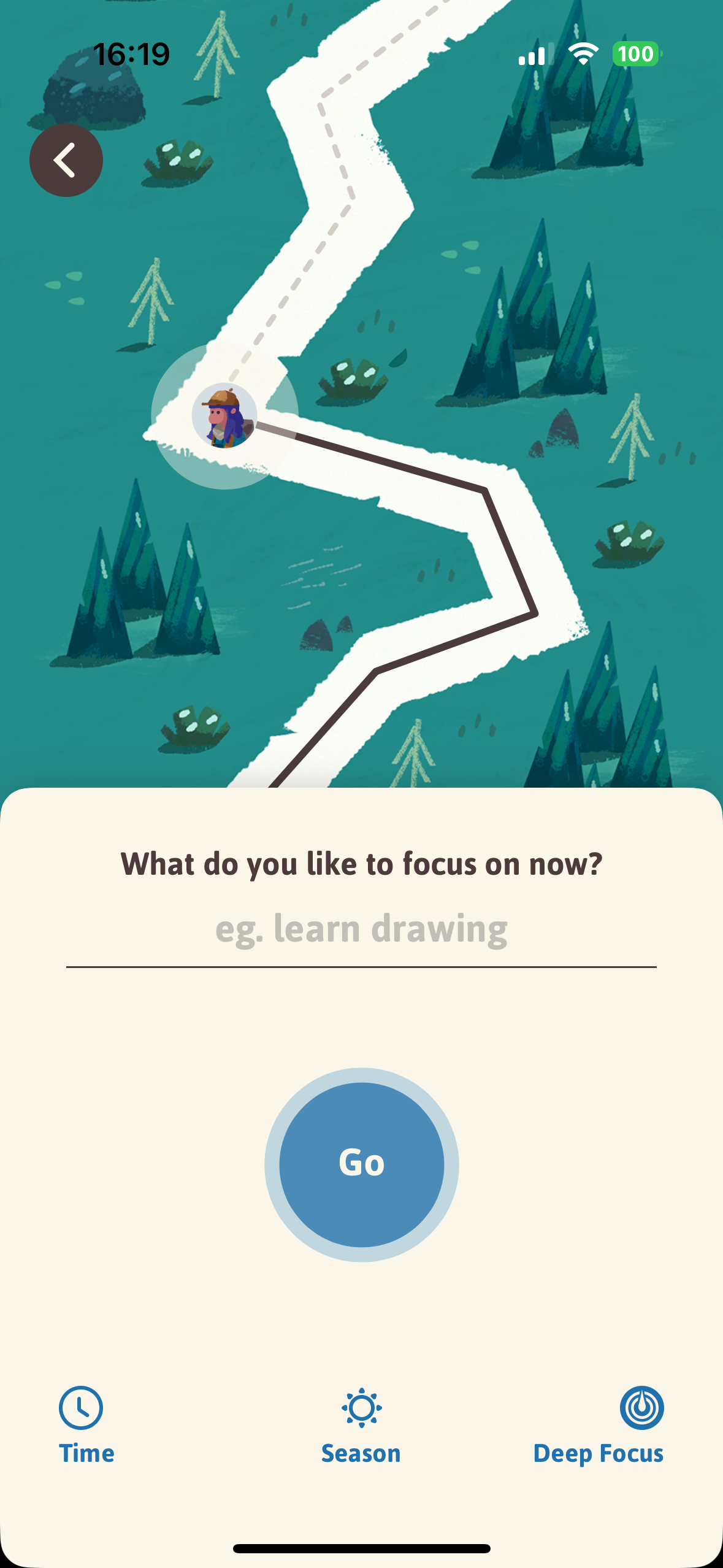
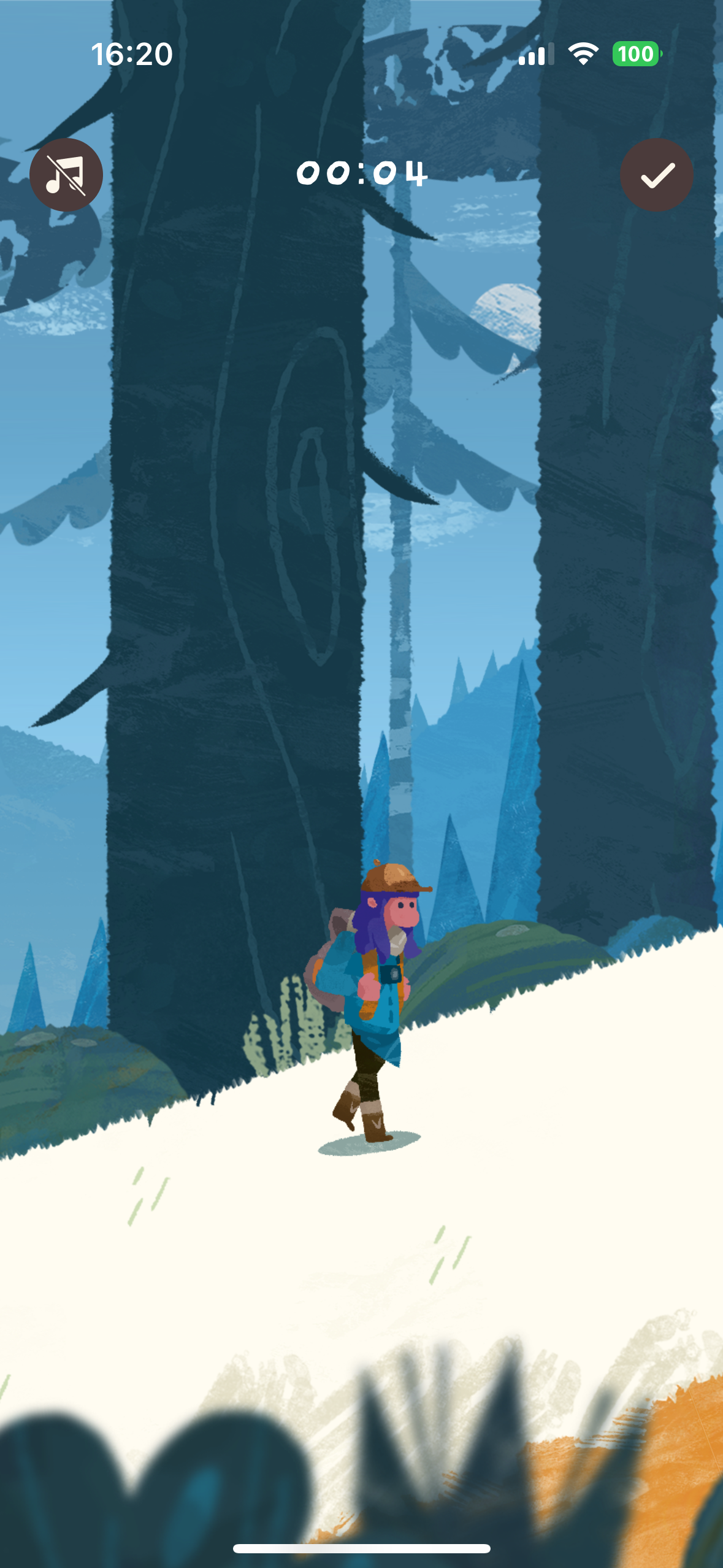
Focus Traveller is a Pomodoro timer, but way, way more fun. In the app, you create a mountain-climbing avatar, who can only scale the peak while you’re working. Whenever I need to eliminate my phone as a distraction and add another incentive to get working, I turn to this app.
I’ll prop my phone up next to my desk, type in my task, and set my little mountaineer to climbing.
There’s ambient noise, soft animations, and it feels like a little treat every time I use it. Plus, if you toggle on deep focus mode, your avatar will stop climbing if you move out of the app.
If you’re motivated by gamification or need some extra incentives to stay off TikTok (🙋♀️), Focus Traveller might be worth a try. It’s not packed with analytics or integrations, but sometimes the little mood boost is what you need.
Plus, if you work for long enough in a day, your little avatar will celebrate when they reach the summit. Yay!
My favorite features:
- Customize your avatar and terrain
- Simple, soothing background sounds
- Focus with friends — you can set up a ‘Travel Group’ if you want to work with someone else
Cost: Free, though there is a paid plan for more fun background options, at $0.99 per month.
Notion
Best productivity tool for note-taking and documentation
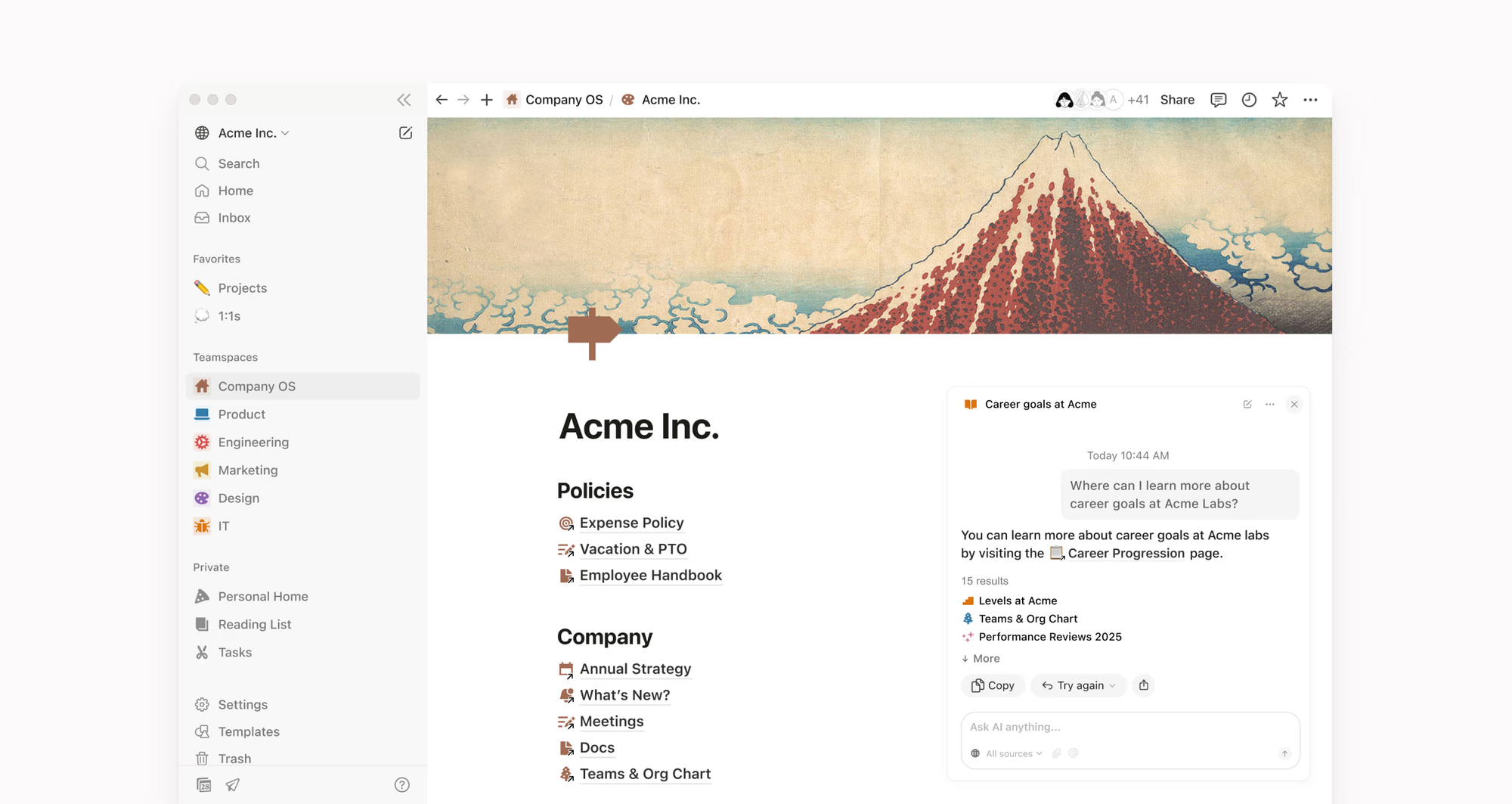
If you’re interested in productivity tools, you probably already know. But this list would not be complete without Notion.
Notion is the productivity equivalent of a Swiss Army knife. You can use it to create simple notes, fully formatted documents, and advanced databases. At Buffer, much of our blog content is planned, written, and edited in Notion. (I’m drafting this blog post in Notion, as it happens.)
Outside of that, I use it for everything from writing podcast scripts to tracking my weekly workouts. Heck, I even keep notes about games I’m currently playing in Notion.
Notion’s flexibility means it can be exactly what you need — but the downside is that it does take some time to set up the way you want. Because of that, I choose not to keep my task management and planning in Notion (though you absolutely can do that). I found that I needed the clarity of a separate, more focused tool. But most of my other work, personal and professional, takes place in one database or another.
All that said, there are so many great templates out there, and once you find your flow, Notion becomes the tool you didn’t know you couldn’t live without. Also, it plays really well with other tools like Routine and Akiflow.
My favorite features:
- The ability to connect databases for related projects
- Multiple views that turn databases into kanbans, calendars, and more
- Formatting options that allow you to create beautiful documents
- The ability to ‘publish’ pages and share them publicly
Cost: Free, with paid plans starting at $10
Superlist
Best productivity tool for lovers of lists
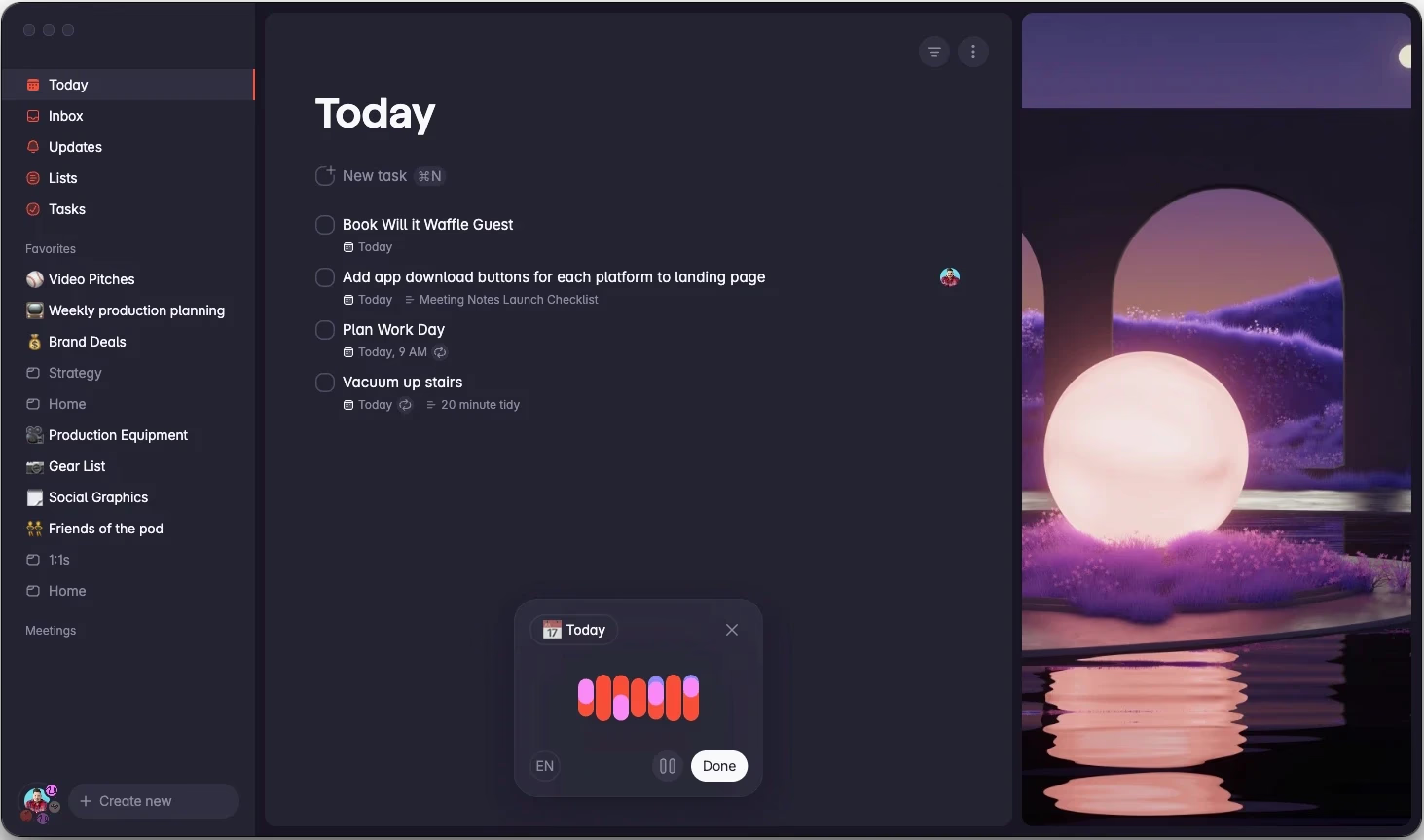
Superlist is still fairly new, but it’s already making waves as a task manager and notes tool. It’s designed by the same folks behind Wunderlist (RIP), and it shows — it’s sleek, minimal, and surprisingly powerful.
I love how it handles subtasks and recurring items, and the interface makes even mundane to-dos feel fun.
As simple as it seems, Superlist has some powerful features tucked away, like AI meeting notes, and a voice assistant that can turn a ramble into actionable to-dos.
It’s not as complex as something like Akiflow or Notion, but that’s exactly the point. Superlist helps you get stuff done without making you feel like you’re managing a giant system.
Plus, there’s a comprehensive free plan that gives you access to a lot of this. If you want a beautifully designed, dead-simple task manager and/or notes app, Superlist is worth exploring.
My favorite features:
- Shared lists that update in real-time (hello, family shopping list)
- Natural language processing to help you add items faster
- AI meeting note-taker that can automatically add to-do items to your list
Cost: Free, with paid plans starting at $15 per person per month.
Productivity tools aren’t one-size-fits-all
My top tip for tools testing: If something on this list doesn’t quite click, don’t be afraid to cancel after the trial. The last thing you want is for your productivity system to become a chore in and of itself.
I highly recommend experimenting with different systems to find what fits your brain best (and keeping a master list of your most important tasks so nothing gets lost in between tool-hopping. I’ve been there!)
Did I miss your favorite tool? There are many others I’d have liked to include here, but this article is already a little long! And since I’m tracking this task, I know it’s time to move on to today’s other items…
In all seriousness, though, there are so many excellent ones out there that it was tough to choose my favorites. If you’d like to recommend something else for this list, pop them in the comments or find me @kirstilang on Threads.
Try Buffer for free
190,000+ creators, small businesses, and marketers use Buffer to grow their audiences every month.




